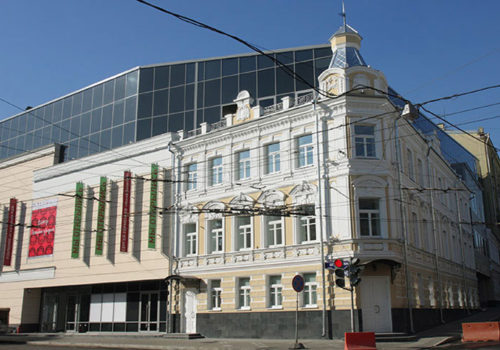“In Moscow, every photo biennale has two faces. On the one hand, we’re trying to educate the public about the history of photography in Russia and the world. On the other hand, we feature the work of contemporary artists who are sometimes very young.” This is how Olga Sviblova, director of the Multimedia Art Museum in Moscow (MAMM), introduces the 10th edition of the festival, which has three major themes this year: “Britain and British Photography,” “Starry Sky” and “Visual Power.” The festival is as energetic, dynamic and uncompromising as its director, and while its intensity rivals the world’s biggest photo festivals, its name recognition leaves something to be desired. This is largely due to its location. In exhibitions throughout the city, the biggest names are displayed next to unknown ones, including a remarkable selection of Russian photographers whose work was obscured during the years of socialism, only to be discovered later on. This is the first part of Olga Sviblova’s educational approach.
With an average of 45,000 visitors during the biennale, expanding archives, and architecture reminiscent of New York’s Guggenheim Museum, the MAMM is undeniably the epicenter of this visual education policy. This spring it is hosting: an exhibition of Erwin Blumenfeld’s photographs, drawings and photomontages (seen last year at the Jeu de Paume in Paris); an André Steiner retrospective organized by François Cheval and Audrey Hoareau; the travel photography of Jessica Lange; Garry Winogrand’s Women Are Beautiful; the wonderful pictures of Lartigue’s wife, Bibi, first exhibited at Arles in 2013; a Diane Arbus portfolio, the first time the American photographer will be exhibited in Russia; a few works by Sarah Moon; and countless photographs from England. There are those shot by Cartier-Bresson, Elliott Erwitt and Irving Penn, brought together in Another London: International Photographers Capture the City Life 1930s – 1970s, which occupies one room. Those by David Hurn (Land of My Father) and Chris Steele-Perkins (England, My England) occupy another, offering a cliché-free portrait of British identity while bringing to mind a few historical events from the kingdom’s history.
“This year is marked by a cultural collaboration between Great Britain and Russia,” says Olga Sviblova. “It’s also about education. For example, for the Russians, conflating the English and the Welsh is very simple. We think of it as the same country, even though there are large differences between them. As a reminder, the exhibition Another London was exhibited at the Tate by the gallery owner Eric Franck, brother of Martine Franck. It’s also thanks to him that Russians will be able to discover Chris Shaw. The British theme this year can be found throughout the festival.”
We can see it in Recollections by Philip Jones Griffiths, organized by the curator Laura Serani at Carousel near the Kremlin’s walls, where a principle very dear to Olga Sviblova is revealed: completeness. The rooms here, reminiscent of the studios in Arles, are dedicated to work by Roger Ballen with more photographs than ever. They remind viewers that Kertesz was extraordinary with color, but they are mainly filled with Russian discoveries: Alexander Lapin, who had a virtuosic sense of composition, and Vladimir Lagrange, a documentarian of Soviet history. Their work, ignored by the West, is akin to the work of Magnum photographers of the 1960s in its humanism.
Perhaps the biggest revelation is not far off at the Zurab Tsereteli Gallery of Arts. Victor Ershov, who died anonymously on a suburban Moscow train in 1997, was discovered a little over a year ago. He was one of many photographers of daily life who were denied fame by the communist regime. His photographs are an ode to the street, where the pulse of a society can be felt. It’s a safe bet that his work will influence future generations of Russian photographers. Ershov is being exhibited alongside the likes of Alexander Lapin, Alexandre Slusarev, Boris Mikhailov, Vladimir Semine and Lialia Kouznetsova, a group which represents the unofficial heritage of Russian photography which Olga Sviblova has struggled to revive over the past 20 years.
Like its predecessors, the 10th Moscow Biennale offers a feast of photographs. Since the beginning, Sviblova has made a list of some 3,000 exhibitions. What about current projects? A publishing program with the third volume in a series of books retracing the history of Russian in images. The first volume covered 1900 to 1917, the second 1917 to 1941, and the third volume 1941 to 1953, the year Stalin died. There’s also the website Russia in Photo, still under construction, but which will one days serve as a massive online archive. “Every exhibition, every photograph, is a message, and this message must be seen to be understood,” says Sviblova.
FESTIVAL
10th Moscow Photobiennale
Until June 8, 2014
http://www.mamm-mdf.ru/en/festivals/filter/biennale-of-photography/
















